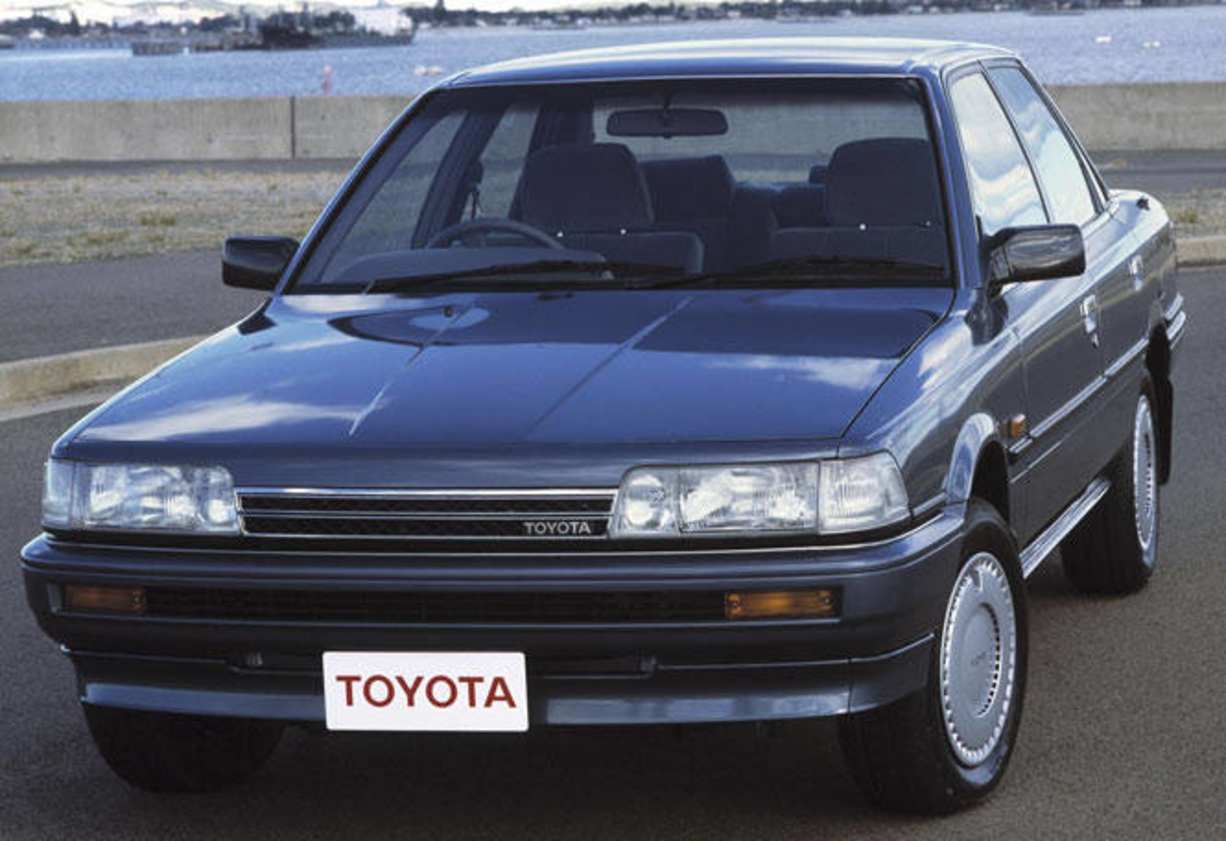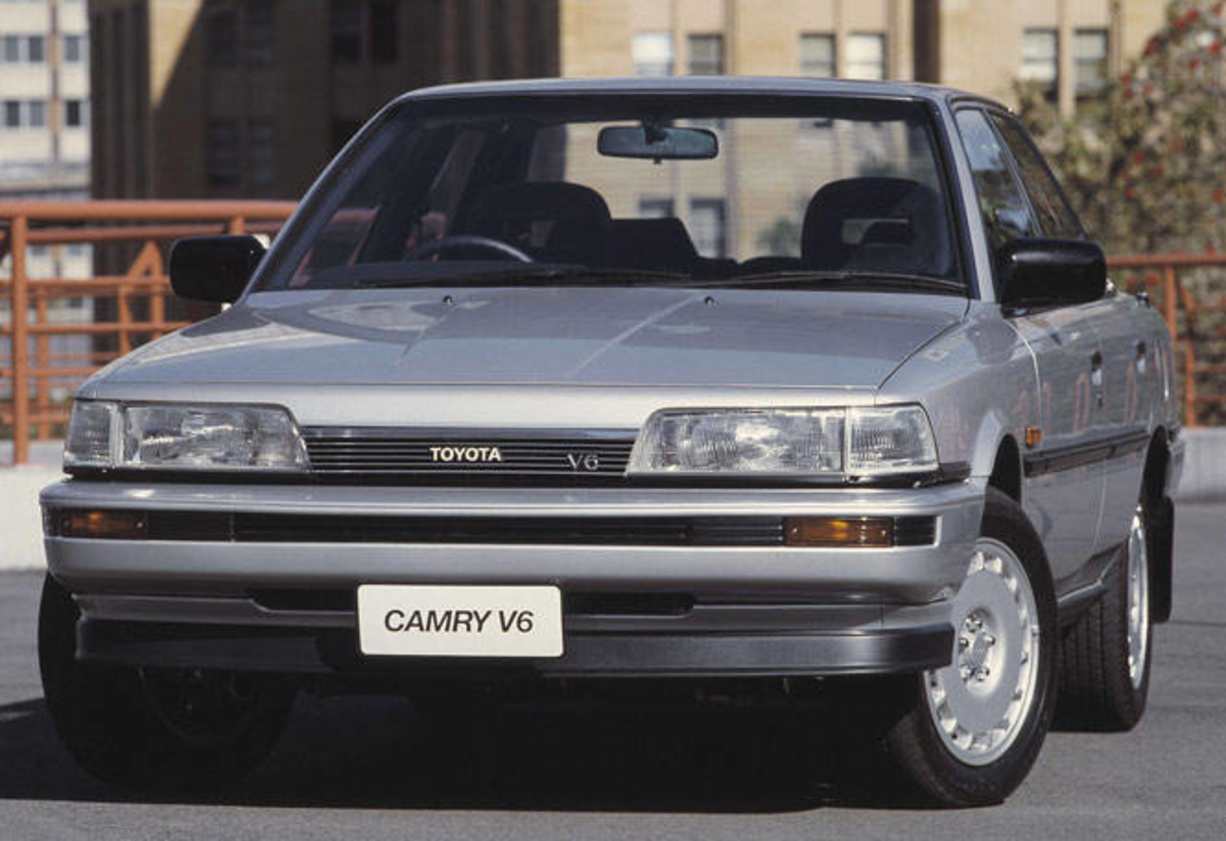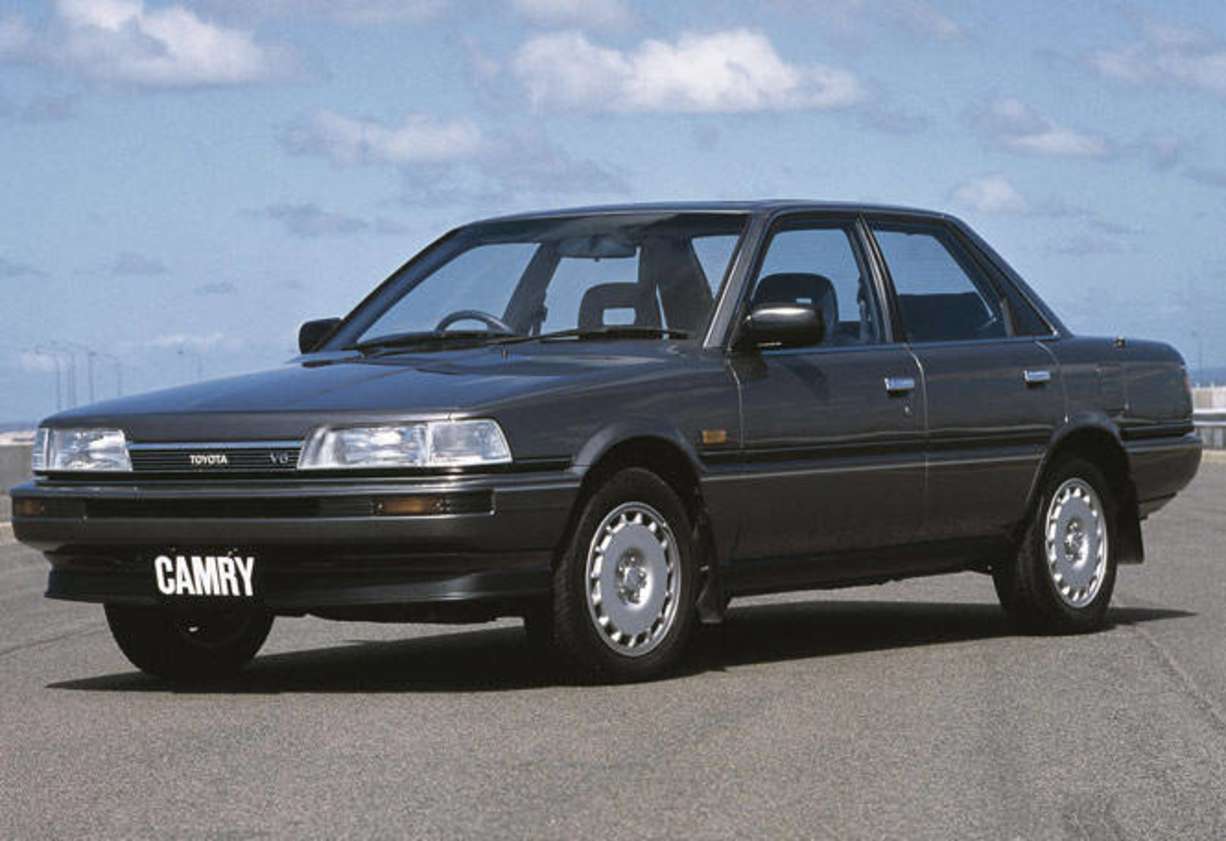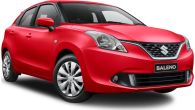Toyotas have a reputation for being rugged, reliable and well built, but at the same time they’re regarded as bland and boring. The Camry is all of those. It always has been, but while it might not excite the senses it is justifiably popular with used car buyers who prefer reliable, economical motoring.
Even Toyota execs admit the Camry isn’t terribly exciting. On the quiet they’ll tell you that its strongest following is among 50-somethings who rate reliability and low running costs above sexy styling and punchy performance.
Toyota would love to increase Camry’s appeal to younger buyers, and the latest model boasts much more adventurous styling which should help their cause, but there were no such thoughts when the locally-assembled second generation Camry was launched in 1987.
Toyota’s aim then was to win the hearts and minds of Australian families with its tried and true formula of good build quality, reliability, practicality and frugality.
It proved to be a very successful formula, as evidenced by the thousands of Camrys that are still going strong today.
MODEL WATCH
The Camry was first launched in 1983. It was one of the company’s first front-wheel drive cars, and was Toyota’s answer to the oil crises of the 1970s when there was a real threat to the supply of oil from the Middle East.
Some car companies at the time downsized their models; others put them on a diet to make them more efficient. Toyota turned to front-wheel drive for the benefits of packaging front-wheel drive offered and produced the mid-sized family car they called Camry.
The first imported Camry was a moderate success, building a loyal local following, but it was in May 1987 when Toyota switched its local production from the Corona to the all-new Camry that it really became popular.
The pleasant new SV20/21 Camry was more appealing than its rather angular predecessor. It was available as a conventional three-box sedan or wagon, and had a softer, more rounded shape that was practical and provided good visibility all round which made it easy to drive and easy to park.
It was heavier than most of its rivals, which made it a safer place to be in the event of a crash. The heavier construction also translated into longevity as it remained tight over time when its rivals became loose and full of creaks and groans as they aged.
Inside there was plenty of room for the average Aussie family with enough features to ensure that it was comfortable. Air-conditioning was optional. Cloth trim was pleasant and hard wearing and has stood up to the ravages of time and temperature quite well.
Power steering was also optional on early models, and the steering effort on those cars is a little high. Later cars came standard with power steering and are much more pleasant to drive.
Initially the base model had a 1.8-litre single overhead camshaft four-cylinder engine and single-point fuel injection that was miserly if not overly powerful, which meant performance was modest rather than racy.
Despite this it was reliable and cheap to run which made them particularly popular with families and older customers who appreciated its outstanding practicality and economy of operation.
For those wanting more there was a 2.0-litre twin overhead camshaft engine with multi-point fuel-injection which was optional on the base model but standard on the upper levels and was the pick of the Camry engines.
A 1989 update brought improved handling and a 2.0-litre carburettor engine in place of the 1.8-litre base engine of the earlier model.
The last update of the second generation Camry was in 1991 when the 2.0-litre twin cam engine became standard on all models. Look for the extended front spoiler and the now familiar Toyota badge that replaced the Toyota name on the grille.
The neat Camry gave way to the “Wide Body” model in 1993
IN THE SHOP
Little goes wrong with the SV20/21 Camry as long as it is regularly serviced.
Most are looking neat and tidy on the road despite entering the twilight of their motoring lives with odometer readings now reaching well into the 200,000 km region.
The engines are generally robust, but the cam timing belt must be replaced at around 100,000 km intervals. Cam belt tensioners also need attention as they wear and the belt can easily jump a tooth or two and then you can be in deep trouble with the potential for extensive internal damage.
The auto and manual gearboxes give little trouble, but noisy drive shafts are not uncommon.
Overall oil leaks are not generally a problem, although it is not uncommon to find oil leaks from the power steering.
LOOK FOR
• Pleasant styling that has aged well
• Peppy performance of 2.0-litre twin cam fuel-injected engine
• Good build quality
• Impressive reliability
• Roomy accommodation for family
• Ideal first car for young drivers starting out
Toyota Camry 1987: GLi
| Engine Type | Inline 4, 2.0L |
|---|---|
| Fuel Type | Leaded Petrol |
| Fuel Efficiency | 9.5L/100km (combined) |
| Seating | 5 |
| Price From | $2,640 - $4,070 |


















.jpg)

.jpg)





































.jpg)
